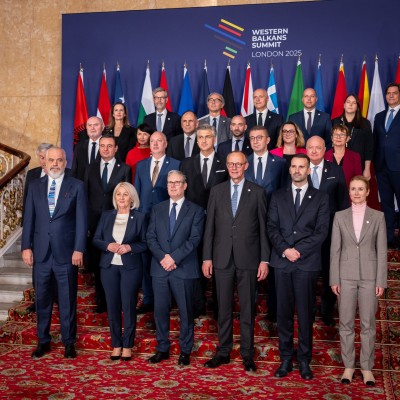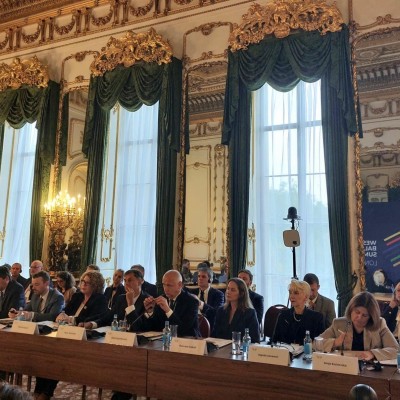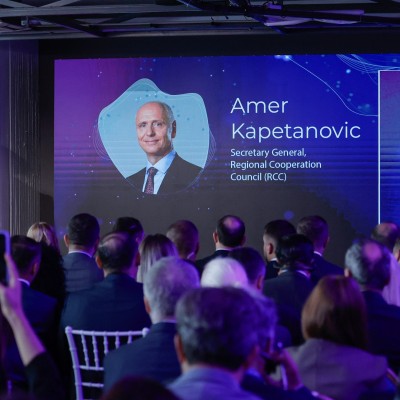Competitiveness working group created under South East Europe 2020 growth strategy, at RCC-hosted meeting in Sarajevo
19 June 2013

The 13th SEEIC meeting was hosted by the RCC Secretariat in Sarajevo, BiH, on 19 June 2013. (Photo RCC/Zoran Kanlic)
SARAJEVO – A working group of regional experts on competitiveness was created in Sarajevo today, under the South East Europe 2020 (SEE 2020) growth strategy, at a meeting hosted by the Regional Cooperation Council (RCC).
The competitiveness dimension contained under the sustainable growth pillar of SEE 2020 will work to improve regional value chains in the Western Balkans, i.e. the ability of the countries to participate in different stages of manufactured goods production.
The meeting presented an outline of inputs for the strategy and agreed to have the first draft of SEE 2020 ready next month.
“The RCC will be focusing fully on SEE 2020”, said Goran Svilanovic, RCC Secretary General, at the opening of the meeting.
“We will work closely with national administrations in preparing and implementing the strategy. We are also thankful to the European Commission (EC) and RCC Board for support.”
“National administrations will have a key role in making the strategy a success, which will be assessed also through EC progress reports. Deputy prime ministers in charge of European integration and line ministries will be the ones directly responsible for ensuring the region’s ability to respond to the economic crisis and globalization challenges.”
“They will be instrumental in preventing a scenario by which a county joins the EU and is immediately in need of a bailout. The progress will be reviewed every six months, similar to EU-level evaluation through the European semester.”
The RCC Secretariat and external advisors provided participants with a proposal for the strategy methodology and a schedule to guide the SEE 2020 process until the end of the year, by which time the strategy is to be adopted.
The meeting agreed on roles and responsibilities of national administrations and regional partners in the adoption, implementation and monitoring of the SEE 2020 strategy.
“We believe that our work on SEE 2020 will demonstrate that the region is ready to cooperate and join efforts in shaping its future, and confirm its main common goal: integration with the EU ‘family’,” said Hamdo Tinjak, Secretary of the Ministry of Foreign Trade and Economic Relations of Bosnia and Herzegovina, who co-chaired the meeting.
Secretary Tinjak emphasized the importance of aligning the national with the regional planning within the scope of the EU’s Instrument for Pre-accession Assistance (IPA) II programme of financial assistance to enlargement countries.
“The Ministry will therefore continue to provide full support and contribution to SEE 2020.”
The meeting gathered representatives of economic teams and dimension coordinators for SEE2020, national IPA coordination officers, European Commission, external advisory team, and international and regional partner organizations.
![]()
The ministers of Western Balkans economies adopted a set of regional and national targets in November 2012, to be reached by 2020. Consequently, a broad and consultative process has been initiated by the RCC Secretariat to develop the SEE 2020 strategy and action plan by November 2013. The strategy is based on five pillars: integrated, smart, sustainable, and inclusive growth, and good governance for growth. The basic goal of SEE 2020 is to improve living conditions and bring back in the region’s focus competitiveness and development of each country and the entire region. In that sense, the document leans onto the EU strategy Europe 2020. The most important SEE 2020 targets include: employment growth rate in the region by 12%, increase in mutual trade by 230%, and the rise of the region’s GDP from the current 38% to 46% of the EU average.



